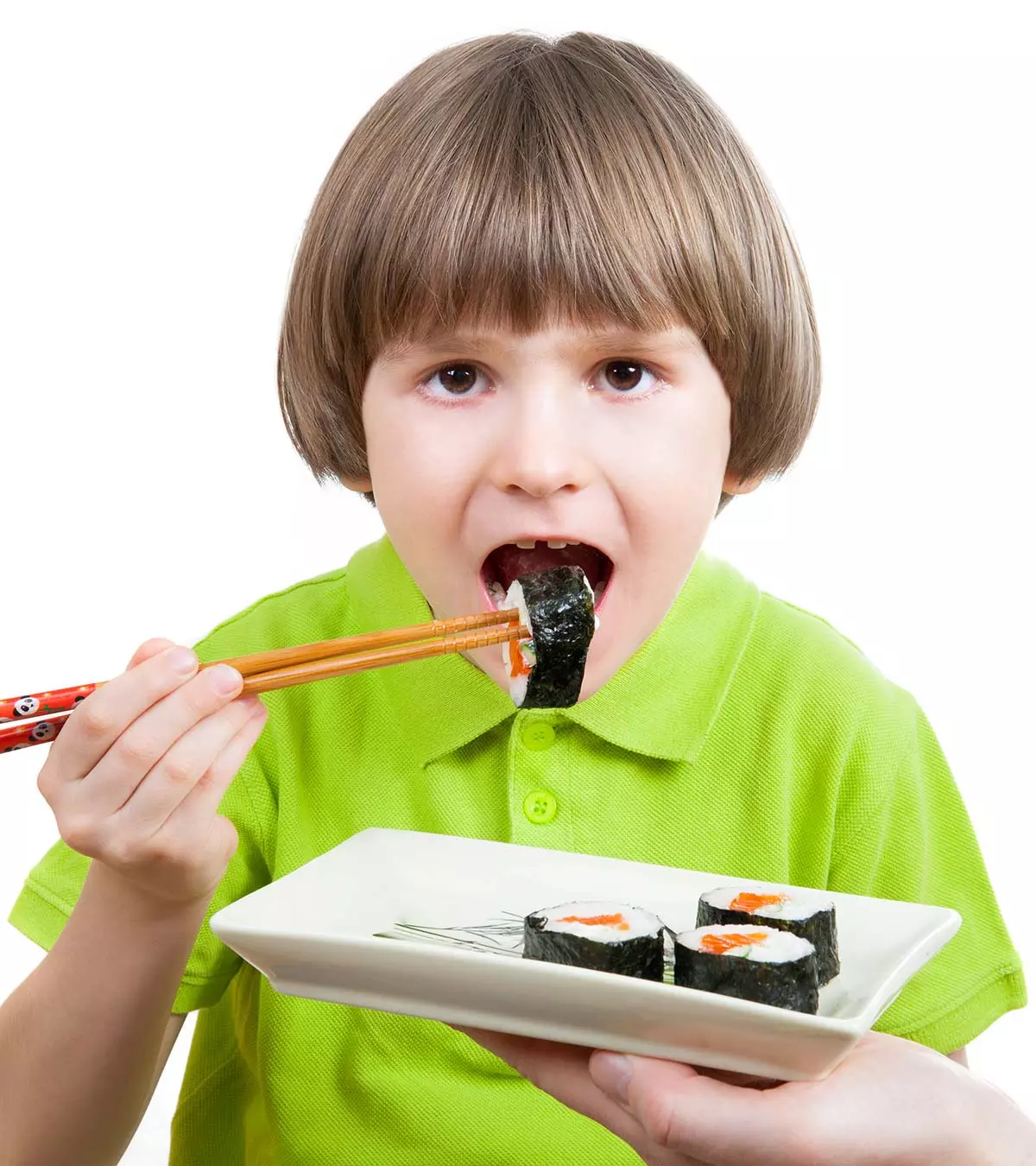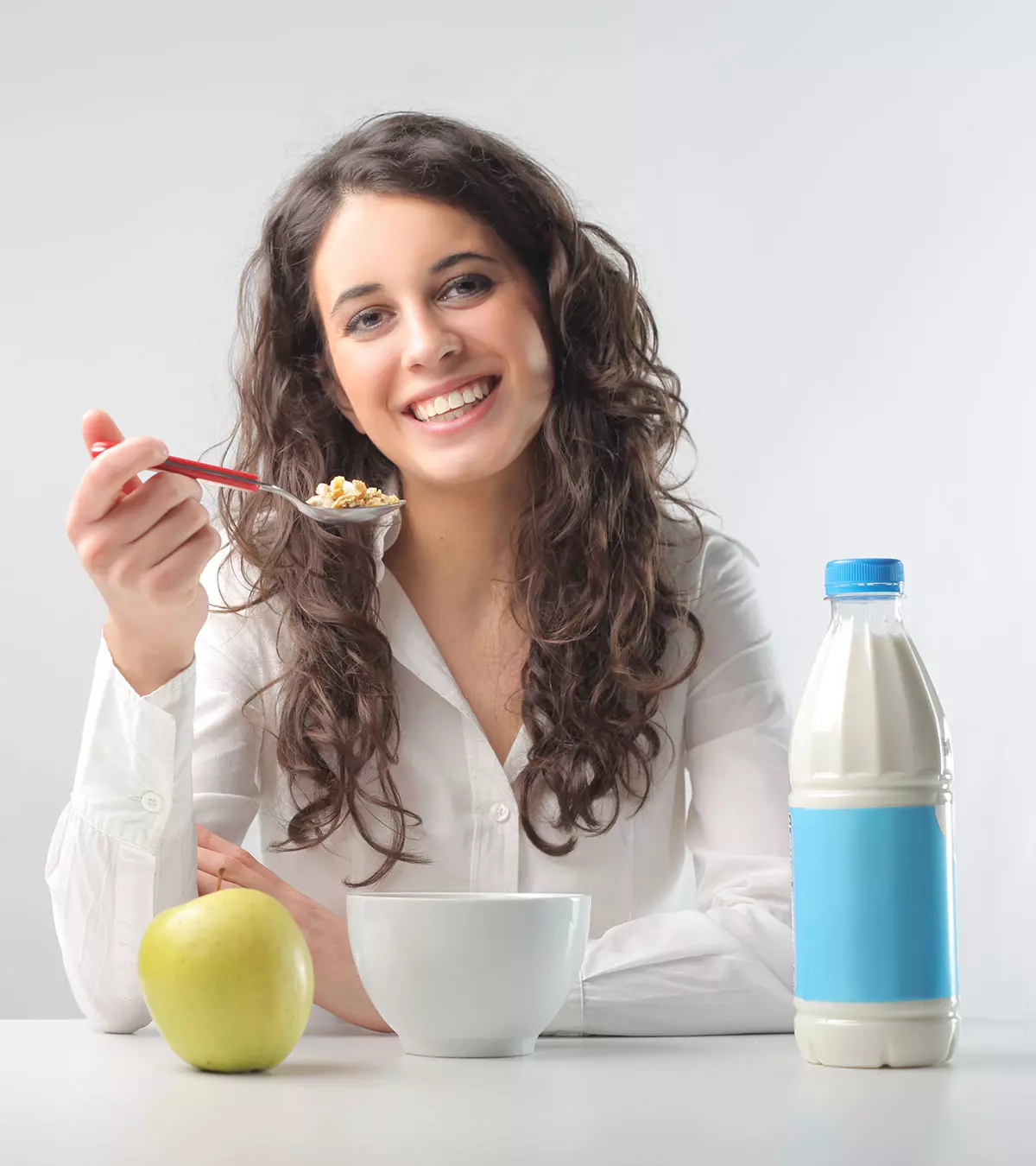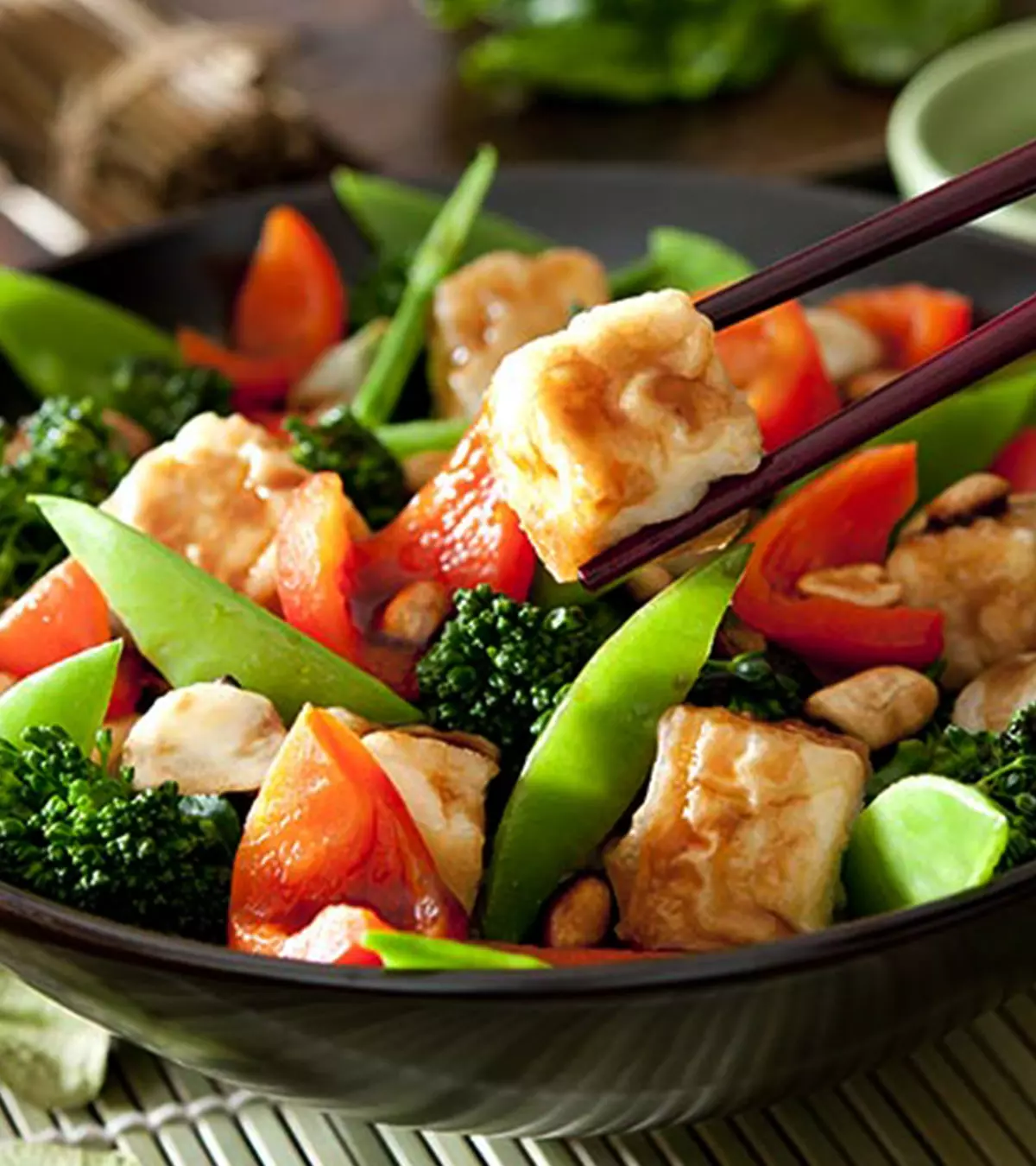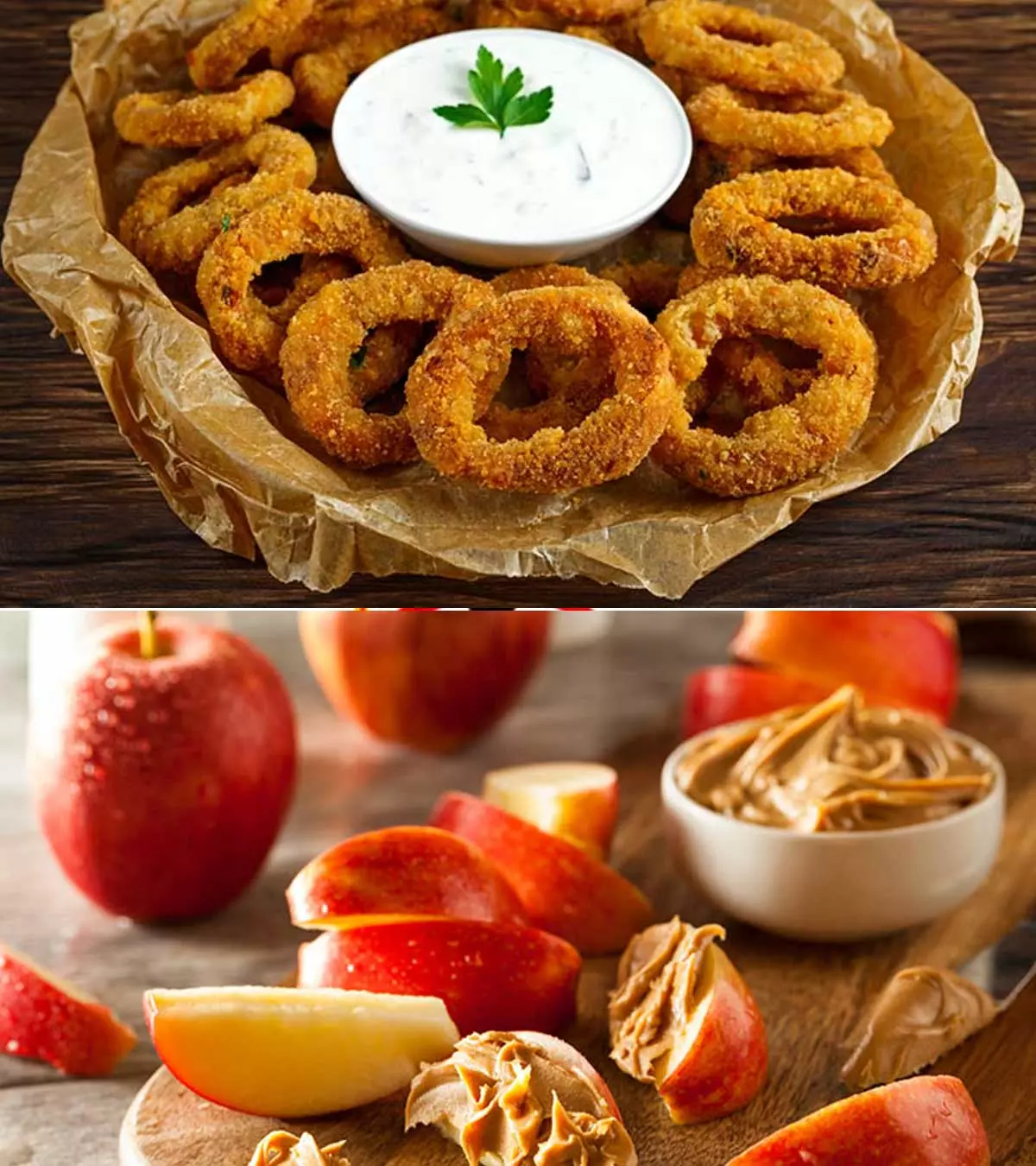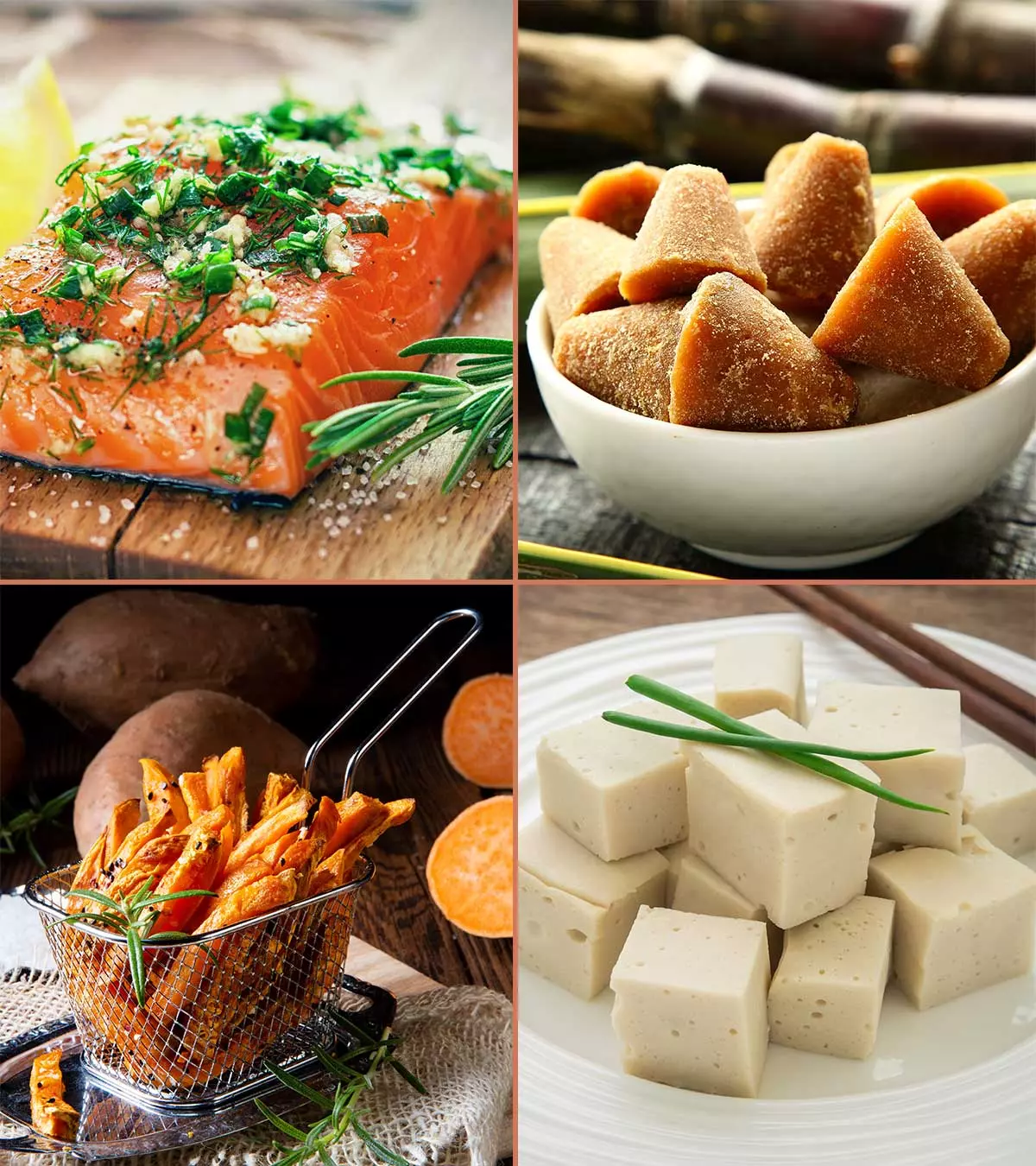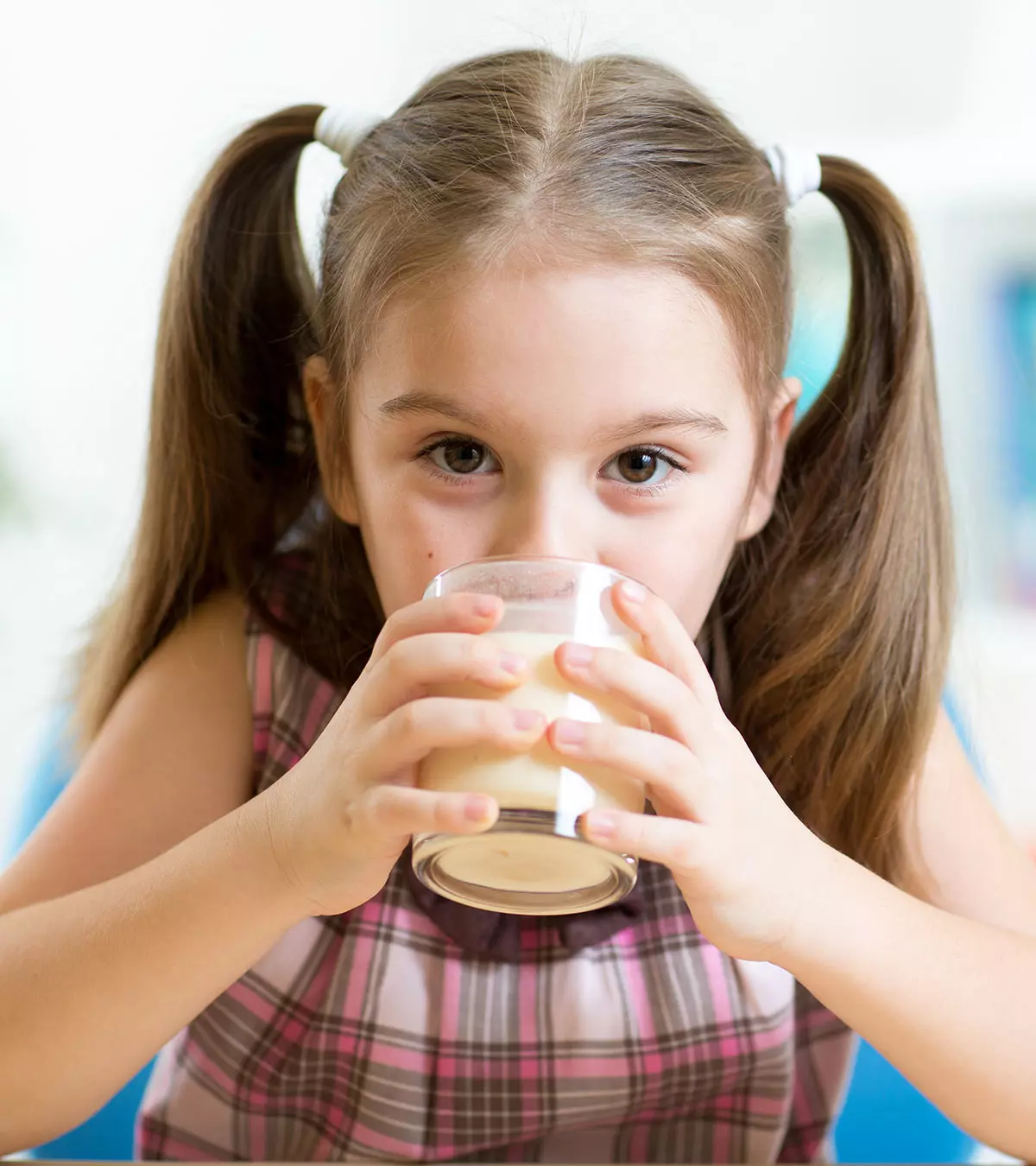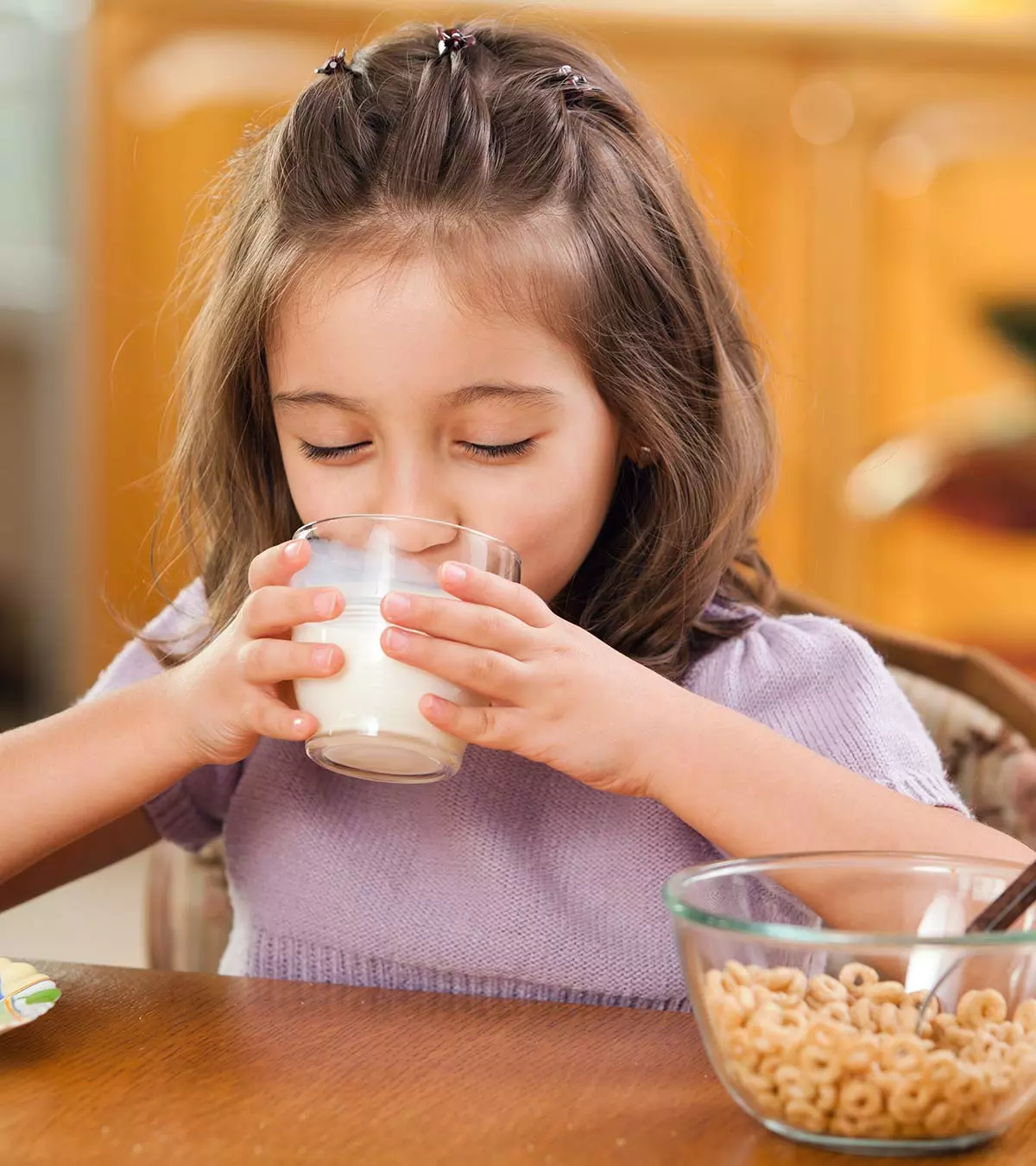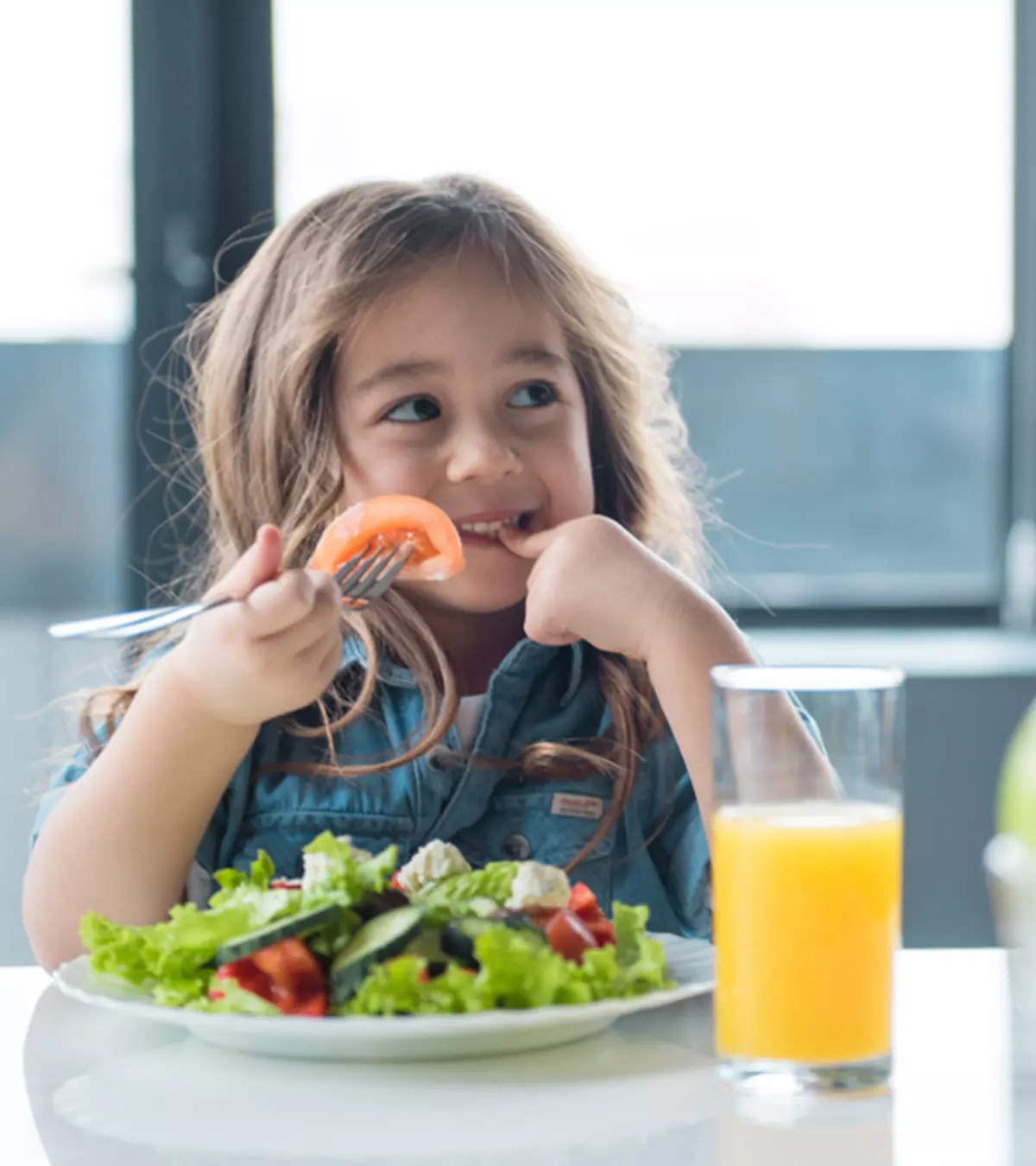
Children go through constant phases of growth and development, requiring regular modifications in their diet and lifestyles. As a parent, you understand the importance of healthy foods for kids; however, you may wonder about the right quality and quantity of foods to be given to your child.
Including healthy and nutritious food items in your child’s diet is essential to prevent nutritional gaps that could interrupt their optimum growth and development. Also, these gaps might make your children more susceptible to health-related problems such as deficiencies, obesity, and diabetes.
Read this post to explore the advantages of eating healthy. Also included are a few tips on helping your child eat healthily and a list of healthy foods for kids.
Key Pointers
- Healthy food helps maintain ideal body weight, get stronger muscles, strengthen the immune system, and more.
- Quinoa, millets, berries, seeds and nuts, and yogurt are healthy foods that aid children’s development.
- Making interesting meals, cutting down processed food, and keeping healthy snacks handy are a few ways to encourage healthy eating in children.
Benefits Of Healthy Foods For Children And Teens
Healthy foods provide important nutrients to help the child in the following ways(1) (2).
- They are nourishing and help maintain a healthy body weight to stay active and alert.
- Get strong muscles and bones necessary for improved flexibility and movement.
- Control binge eating caused by sharp hunger pangs triggered by eating unbalanced meals or less than required or skipping meals.
- Promote digestive motility and prevent digestive issues, such as constipation, bloating, cramps, indigestion, and flatulence.
- Enhance gut microbiota and boost several physiological functions of the body.
- Keep the immune system robust, helping ward-off infection and illnesses.
- Improve academic performance by maintaining the focus and concentration necessary to read and comprehend effectively.
- Reduce the risk of developing lifestyle-related health issues, such as childhood obesity, type 2 diabetes, high blood pressure, etc.
- Enhance mood and promote mental health keeping psychological issues, such as mood swings and anxiety away.
- Enhance self-esteem and confidence by keeping a child/teen in a positive mental state and happy.
21 Healthy Foods For Children And Teens
A World Health Organization surveillance study indicated that daily consumption of fresh fruits and vegetables is prevalent only among 42.5% and 22.6% of 132 489 children, respectively. However, the 2015-2020 Dietary Guidelines For Americans recommend that children and teens consume a healthy and well-balanced diet consisting of various fruits, vegetables, whole grains, fat-free and low-fat dairy products, a variety of protein foods, and healthy oils (3). Healthy children and teens need around three meals and one to two snacks daily. Here is a list of 20 child-friendly foods you can add to enhance your child/teen’s diet quality.
1. Quinoa
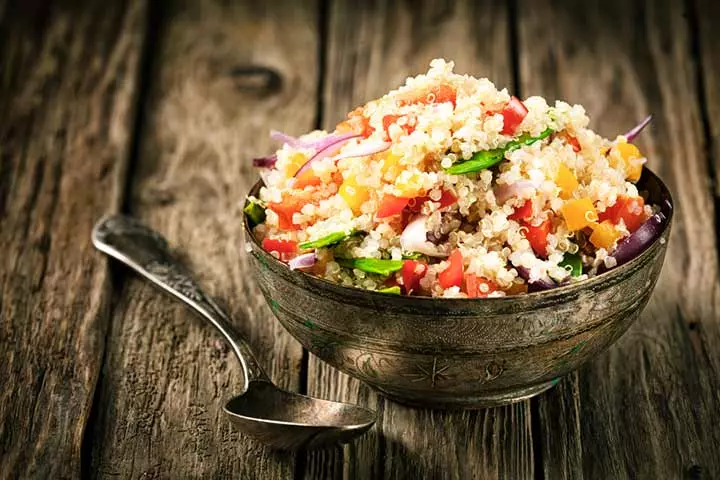
Quinoa is a healthy seed-based cereal consisting of high amounts of dietary fiber, protein, PUFA, and minerals. It is one of the most nutritious choices for children and teens (4). You can add quinoa to salads, soups, bread, or use it to prepare gluten-free porridge. You can also add it to other healthy recipes across different meals.
 Quick fact
Quick fact2. Oats
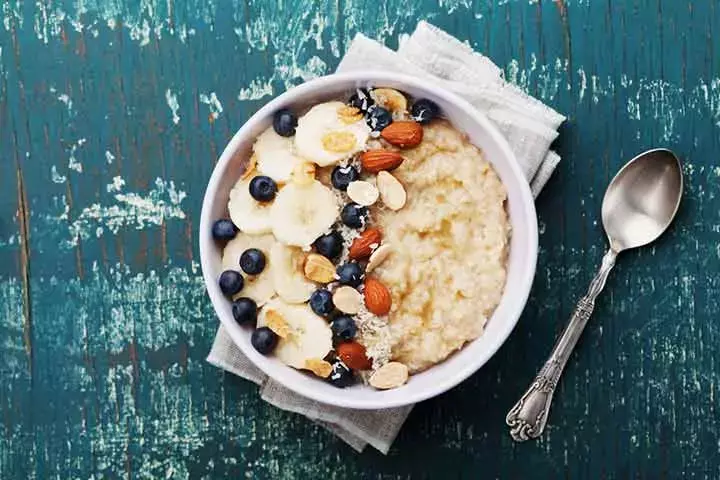
Oats are considered to be a healthy food for kids. The whole-grain food supplies soluble and insoluble fiber, especially the powerful fiber beta glucaniA type of soluble fiber derived from oats and barley. , protein, antioxidants, minerals, and vitamins. You can choose from oats, groats, rolled oats, and steel-cut oats to make healthy preparations, such as porridge, salads, and desserts. Oats bran is another oats product to make wholesome bread, binders, and crunchy-textured toppings (5) (6).
3. Millets
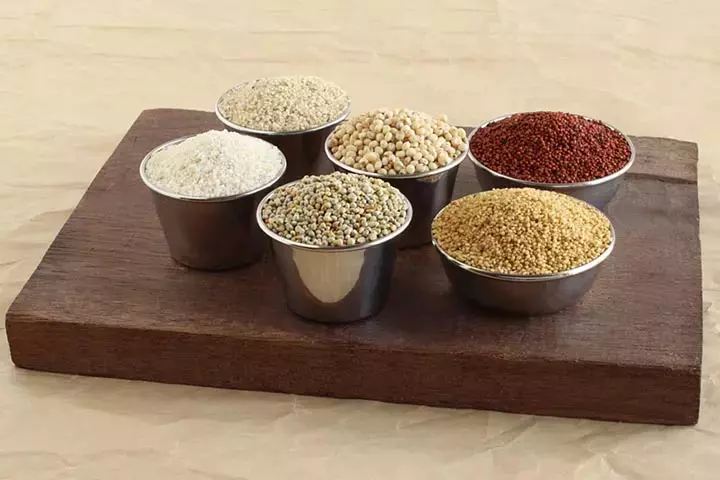
Millets and its products, such as bread, porridge, noodles, tortilla wraps, etc., can add variety to your child’s daily diet. They provide dietary fiber, minerals, vitamins, protein, and bioactive compoundsiChemicals found in fruits and vegetables that possess antimicrobial and antioxidant properties. , offering several health benefits over time. Little millet, foxtail millet, and barnyard millet are some types you can add to your daily diet and use to prepare healthy recipes for children (7).
 Quick tip
Quick tip4. Whole-wheat

Whole-wheat pasta, pancake, and flakes are some products you can try to add variety and nutrients to meals. Besides, whole-wheat flour can substitute refined flour in pizza, cake, wraps, and biscuits.And a diet rich in whole grains can reduce the risk of type 2 disorders, heart diseases, obesity, etc. Regular consumption of whole-wheat products provides healthy amounts of dietary fiber, protein, vitamins B, minerals, and phytochemicalsiBioactive compounds found in plant-based foods that act as antioxidants and have antimicrobial effects. (8).
5. Apple
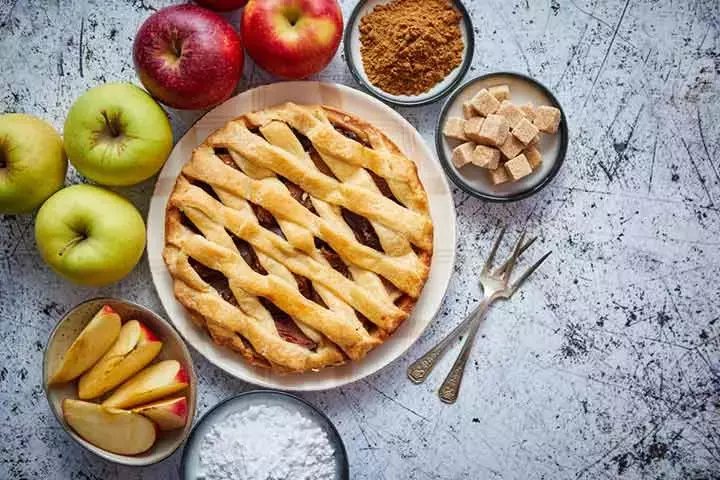
An apple with peel is a healthy snack to enhance your child/teen’s dietary fiber and overall nutrient intake. Eating a medium-sized apple offers soluble and insoluble fiber, vitamin C, and essential phytochemicals, such as quercetin (9). These nutrients also contribute to healthy growth and development.
6. Banana

Banana pancakes, milkshakes, porridge, etc., are a few easy-to-prepare banana recipes that children and teens can enjoy. Encourage your child to consume bananas regularly as part of a recipe or as a quick snack. Dietary fiber, vitamin B6, calcium, potassium, copper, manganese, and bioactive compounds, such as carotenoids and phenols, are some of the essential nutrients provided by bananas (10).
7. Pineapple
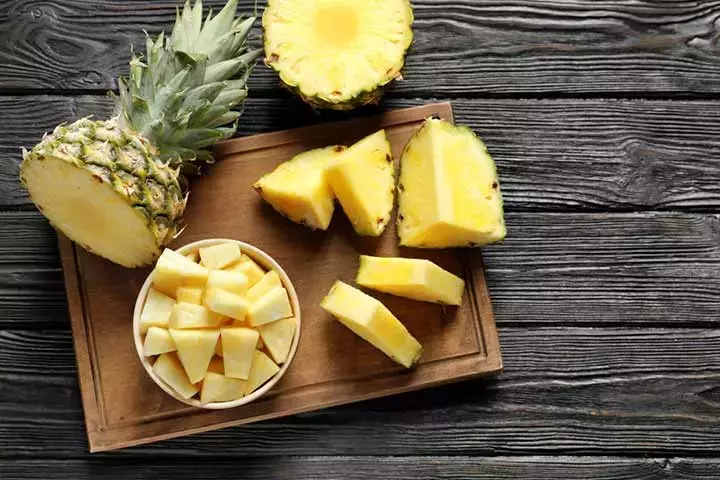
Pineapple is a tropical fruit available in fresh, canned, and frozen forms. You can use it to prepare various dishes and beverages. Adding a cup of pineapple to your child’s well-balanced diet can supply vital nutrients, such as dietary fiber, copper, calcium, potassium, and vitamins B1, B6, and C (11).
 Did you know?
Did you know?8. Berries
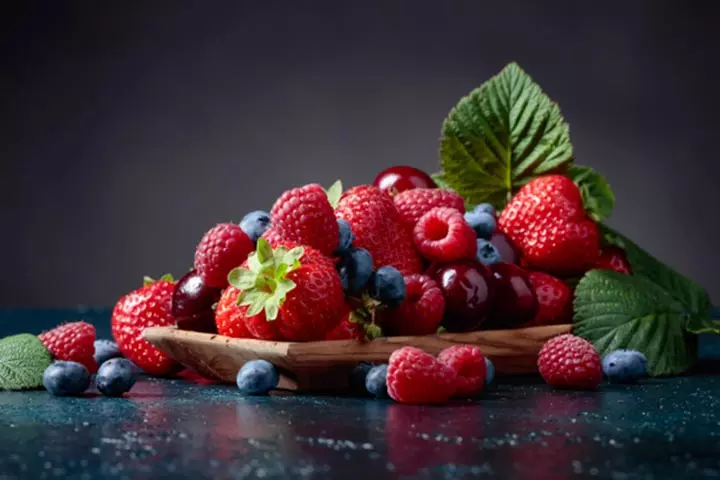
Raspberries, blackberries, blueberries, and cranberries are some of the common berries available commercially in fresh, frozen, and canned forms. A cup of mixed berries in yogurt, oatmeal, breakfast cereal, or porridge can offer significant amounts of dietary fiber, vitamin C and E, selenium, and phytochemicals. These nutrients are good for both the physical and cognitive health of a child (12) (13). Besides, berries add color to a child’s meal, making it appealing.
9. Coconut
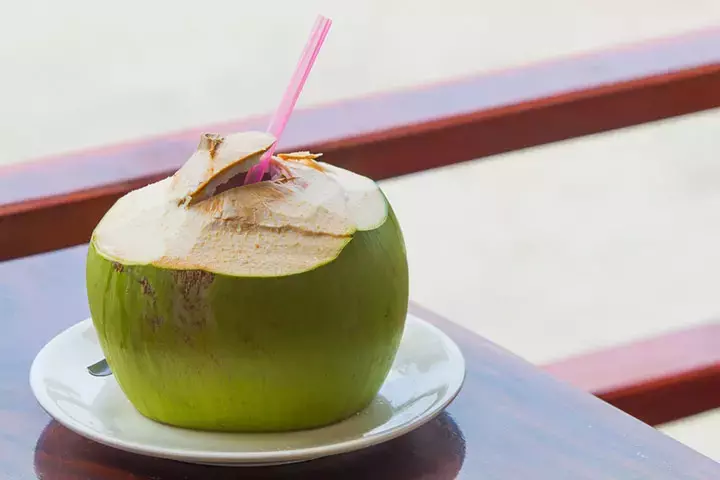
Tender coconut water is a nutrient-rich, refreshing drink that is a perfect replacement for high-calorie beverages. On the other hand, mature coconut’s flesh adds flavor and nutrients to different recipes, such as porridge, desserts, and soups. Consumption of coconut flesh provides several nutrients, such as protein, fiber, folate, and medium-chain triglyceridesiThe most common type of fat in the blood that provides energy for bodily functions. (14). Coconut milk and coconut shreds/flakes and coconut oil are some coconut products used to prepare recipes, like curries and dips.
10. Avocado
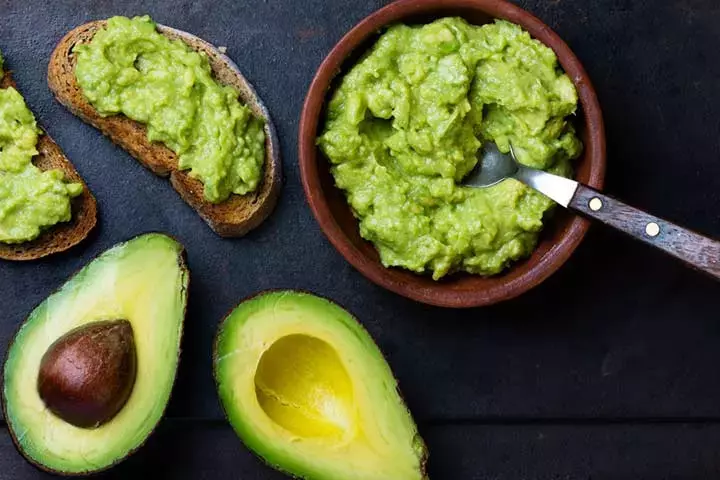
Avocado has a buttery pulp rich in healthy unsaturated fats, fiber, vitamin K and E, and potassium (15). Avocado smoothies, dips, and salads are some recipes that can be added to your child’s regular diet. The fruit’s pulp can also be used as a replacement for saturated fat in several recipes.
 Quick tip
Quick tip11. Sweet potato
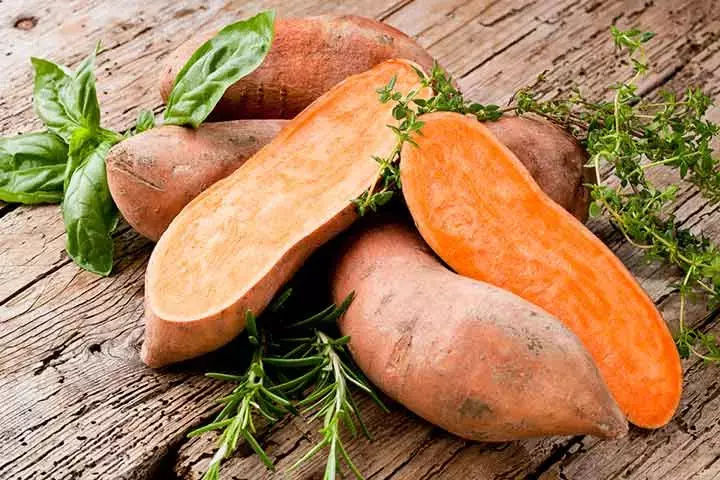
Sweet potato is a tuber vegetable available in a variety of colors, such as white, yellow, orange, and purple. Eating sweet potatoes with peel offers fiber, vitamin C and B6, potassium, and phytochemicals, such as beta-caroteneiA natural dye that gives color to fruits and vegetables and gets converted into vitamin A in the human body. (16). You can serve baked, grilled, boiled, or roasted sweet potato as part of soups, salads, casseroles, and sandwiches to children and teens.
12. Broccoli

Broccoli is a cruciferous vegetable rich in healthy compounds, such as isothiocyanate and sulforaphane, and nutrients, such as vitamin C, fiber, calcium, and folate (17). Adding broccoli to your child/teen’s well-balanced diet can provide several health benefits over time. Broccoli can be made a part of salads, soups, stir-fried rice, and porridge recipes.
13. Leafy greens
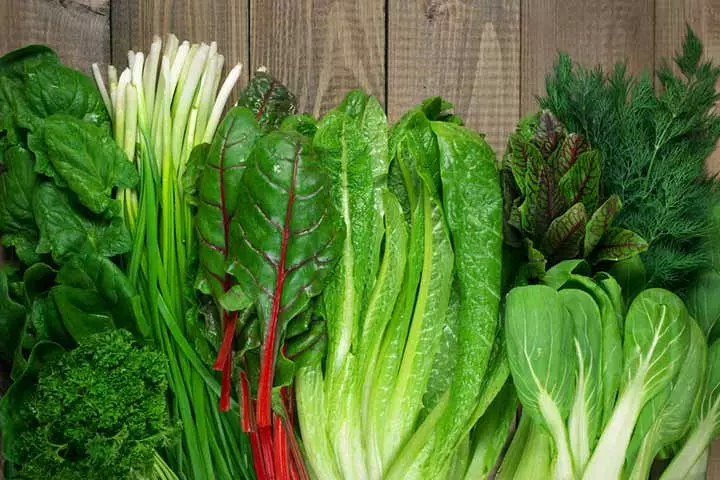
Raw or cooked leafy vegetables, such as kale, spinach, collards, provide umpteen nutrients and bioactive compounds for good health. Encourage your child to consume a cup to two cups of fresh, leafy green vegetables a day to enjoy optimum benefits from its nutrients (18). Pasta salad, kale chips, and mixed vegetable rice are delightful dishes you can try to add leafy greens to your child’s diet.
14. Dried fruits

Dried fruits, such as figs, raisins, dates, and prunes, are energy and nutrient-dense foods that can add flavor, color, and texture to recipes. Regular consumption of assorted dried fruits for kids provides fiber, healthy fats, micronutrients, enzymes, and phytochemicals that have numerous long-term health benefits for them (19).
 Quick tip
Quick tip15. Seeds and nut
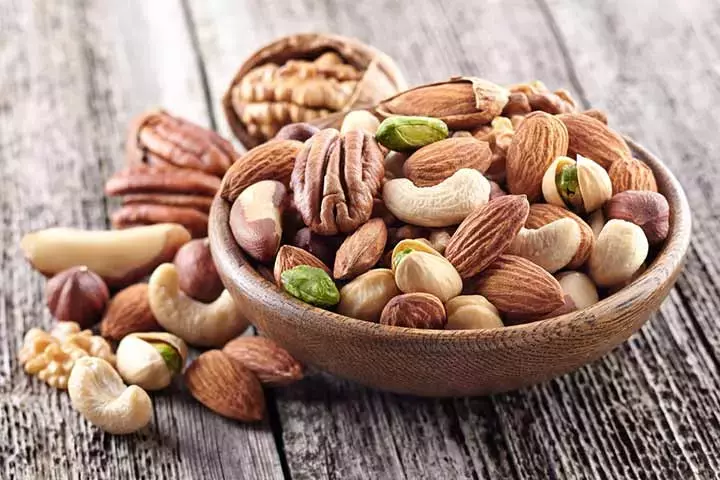
Seeds and nuts provide significant amounts of fiber, micronutrients, PUFA, and phytochemicals. Regular consumption of seeds and nuts offers several long-term health benefits. You can include flax seeds, chia seeds, sesame seeds, almonds, walnuts, and macadamia nuts to various recipes and add flavor and texture.
16. Pulses and legumes
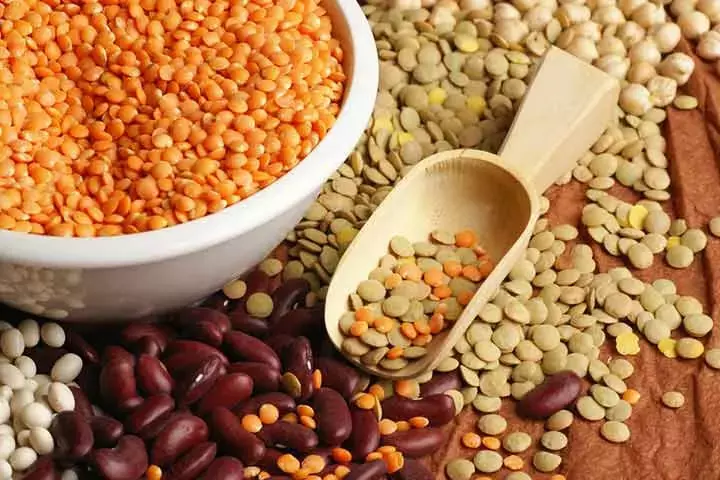
Pulses and legumes, such as soybeans, chickpeas, lentils, peanuts, and peas, provide considerable amounts of protein, micronutrients, such as iron and folate, fiber, and PUFA (20). They can also work as a prebiotic and benefit the gut bacteria. Pulses and legumes can be an essential food group for children and teens on a vegetarian or vegan diet.
17. Yogurt

Yogurt is a popular dairy product and a probiotic. Low-fat or fat-free options, such as Greek yogurt, are healthy choices, and add calcium, protein, and B vitamins to the child’s diet (21). Yogurt parfait, yogurt veggie salad, and yogurt dip are some of the healthy recipes that you can consider preparing for children and teens.
18. Tofu
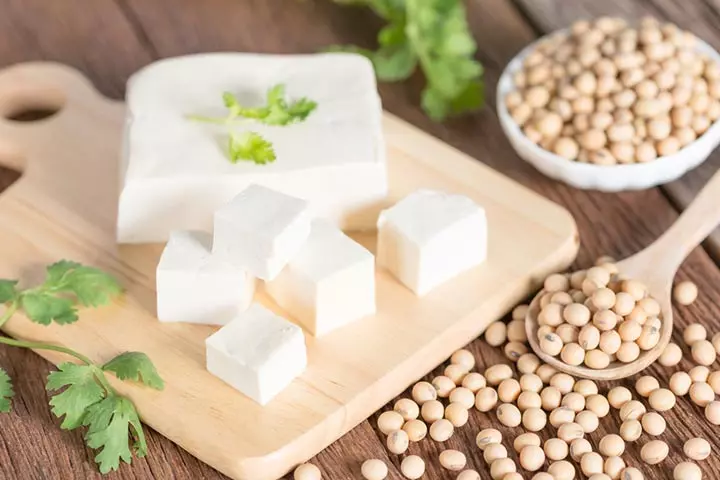
Tofu is an excellent alternative to cottage cheese. This soy product supplies protein, omega-3 fatty acids, micronutrients, and bioactive compounds, such as isoflavones, that provide long-term health benefits (22). Stir-fried tofu noodles, a crumbled tofu sandwich, tofu dip, and tofu curries are some delicious dishes for children and teens.
19. Fish
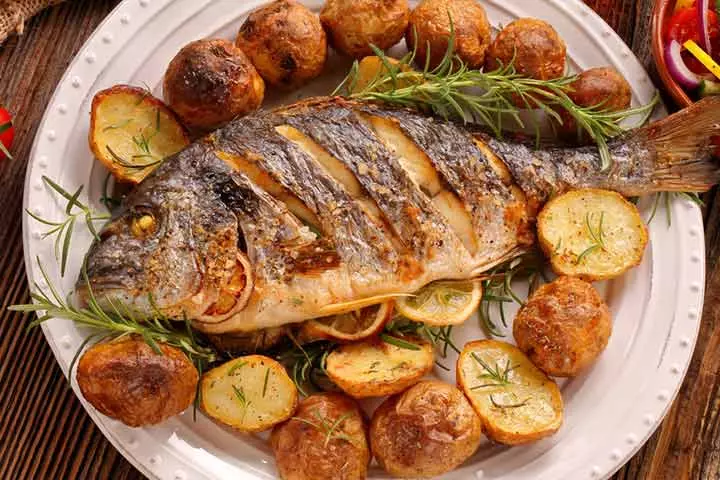
Fish is a rich source of high-quality protein and essential nutrients, such as omega-3 fatty acids, selenium, iodine, and vitamin-D and B12 (23). These nutrients could play a role in the healthy physical and cognitive development of children and teens. Pick low-mercury fishes, such as salmon, sardine, and tuna, and add them to a variety of dishes.
20. Eggs

Egg is a high-protein food consisting of several micronutrients and omega-3 fatty acids. It even contains 13 different vitamins essential for healthy growth (24). Scrambled egg, egg roll, egg sandwich, egg avocado salad, and egg noodles are healthy egg recipes that children and teens can consume regularly.
21. Watermelon
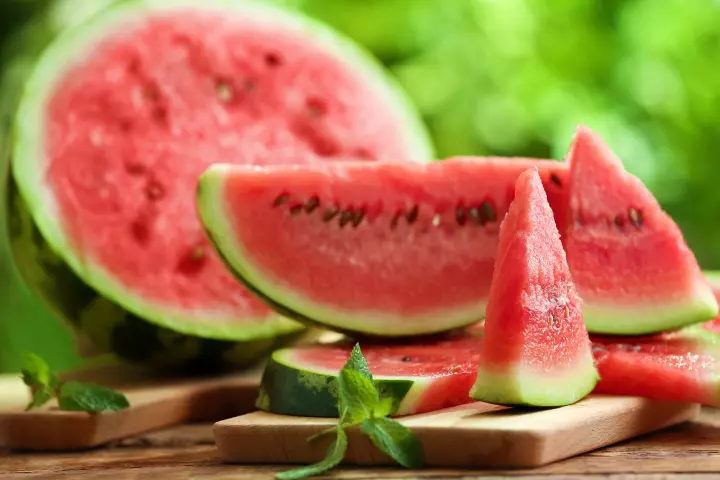
Watermelon is a hydrating fruit composed of about 92% water. This low-sodium fruit contains several nutrients, such as vitamins A, C, E, folate, potassium, magnesium, and fiber, that can contribute to your child’s nutritional needs. You can give your child watermelon slices, smoothies, or juice across meals. Alternatively, you can use watermelon to make delightful items like popsicles or flavored yogurt to make watermelon a part of your child’s well-balanced diet (25).
Tips To Make Your Children Eat Healthy Foods
Children may not be enthusiastic to eat healthy foods. In such cases, you might use these tips to make them eat healthy (26) (27).
- Be a role model and practice healthy eating and an active lifestyle as a family. Children learn good habits by observing parents and other elders in the family.
- Make the meals appealing and enjoyable by serving them in attractive bowls and plates. Cut food in different shapes and garnish them.
Sarah, a mom of three and a cooking enthusiast, recommends this approach. She says, “This may be the most effective one for my kids. They go BONKERS for fruit slices on skewers, ‘ghosty bananas’ (half bananas with two chocolate chips for eyes), or their names written with carrot sticks (i).”
- Encourage children and teens to indulge in family meals, without any diversion, like television. Eating without distractions can help in better portion control.
- Guide your child to not skip meals. Here are some quick-to-make, healthy breakfast recipes you can try so that your child or teen looks forward to eating breakfast every day.
- For packaged breakfast cereals, select least processed, organic, low-sugar, low-sodium alternatives containing whole-grains ingredients, like oats, muesli, granola, and whole-wheat flakes.
- Keep all the processed foods and beverages out of your child’s reach and opt for natural foods and beverages.
- Keep healthy snacking options handy and provide options, such as a bowl of fruit or a small bowl of air-popped popcorn. Avoid deep-fried, high-sugar, and high-fat snacks, such as fast foods.
- Serve healthy vegetable and fruit smoothies, salads, soups, 100% juices, and healthy mocktails occasionally.
- Cook new recipes and add a variety of food groups in every meal. Ask your child’s feedback and try giving them new and healthy food options.
- Go grocery shopping with your child and tell them about the benefits of eating seasonal fruits and veggies.
- While selecting packaged foods, guide them to read food labels, and understand the difference between various foods based on nutritional values. Motivate them to look for low-sugar, low-sodium, low-fat, or fat-free products.
- Prefer lean cuts of meat, such as chicken and fish, to red meat, which is high in saturated fat. Buy fresh meat instead of picking deli meat, which is highly processed.
- Develop a habit of eating dinner early and serve healthy dessert choices, such as fruits or yogurt, instead of cakes, pies, jellies, etc.
- Encourage your children to help with cooking and meal planning to spark their interest in healthy foods. This can teach them useful skills, and they are more likely to eat the meals they prepare.
- Try to eat-out as less as possible and guide your child or teen to make healthy choices if eating out.
- Healthy eating is incomplete without healthy beverages. Encourage your child to pick healthy beverages, such as coconut water or plain water instead of soda, high-sugar fruit juices, and energy drinks.
 Quick tip
Quick tipFrequently Asked Questions
1. How much dairy should children consume each day?
The recommended daily amount of dairy for children varies by age group. According to the American Heart Association, children between one and eight years should consume two cups of milk or its equivalent dairy per day, and children of nine to 18 years and older should drink three cups. Serving fat-free and low-fat dairy products is recommended (28).
2. How much protein should children consume daily?
The recommended daily amount of protein for children also varies by age. Children between four and nine years need 19g of protein daily, and those between nine and 13 need 34 grams. Adolescent boys (ages 14-18) require 52 grams, and girls need 46 grams (29).
3. What are the dangers of consuming too much junk food for children?
Junk food is typically high in calories, sugar, sodium, and unhealthy fats and low in nutrients which, when consumed frequently, may pose a risk to good health. The dangers of consuming too much junk food include an increased risk of obesity, type 2 diabetes, high blood pressure, high cholesterol, heart disease, tooth decay, and other health problems (30).
4. How much carbohydrates and fats should a child have in their diet?
Los Angeles-based dietitian Jordan Anthony explains, “Carbs fuel a child’s metabolism and brain. While the exact recommended macronutrient levels vary by age, a general guideline suggests about half their calories should come from carbohydrates, 30% from fats, and 20% from protein.”
Children are in a phase of constant growth. Hence, healthy foods for kids are essential to support their growth and sustain good health. Therefore, introduce healthy foods and food habits from a young age and educate them on the significance of healthy eating to develop a healthy lifestyle. You could also involve them while cooking and grocery shopping as a bonding activity and to inform them about various healthful foods. Furthermore, discourage the consumption of processed foods and caffeinated beverages and serve them a variety of nutritious cereals; healthy, refreshing drinks; and nutrient-rich vegetables and fruits.
Infographic: What Are The Different Healthy Food Choices for Children?
There are numerous benefits of consuming a balanced diet and healthy food choices in children. While proper nutrition provides them with essential nutrients to grow, it also helps to maintain a healthy weight. The following infographic presents various healthy foods you may include in children’s diets.

Illustration: Momjunction Design Team
Illustration: Top 21 Healthy Foods For Kids And Tips To Make Them Eat
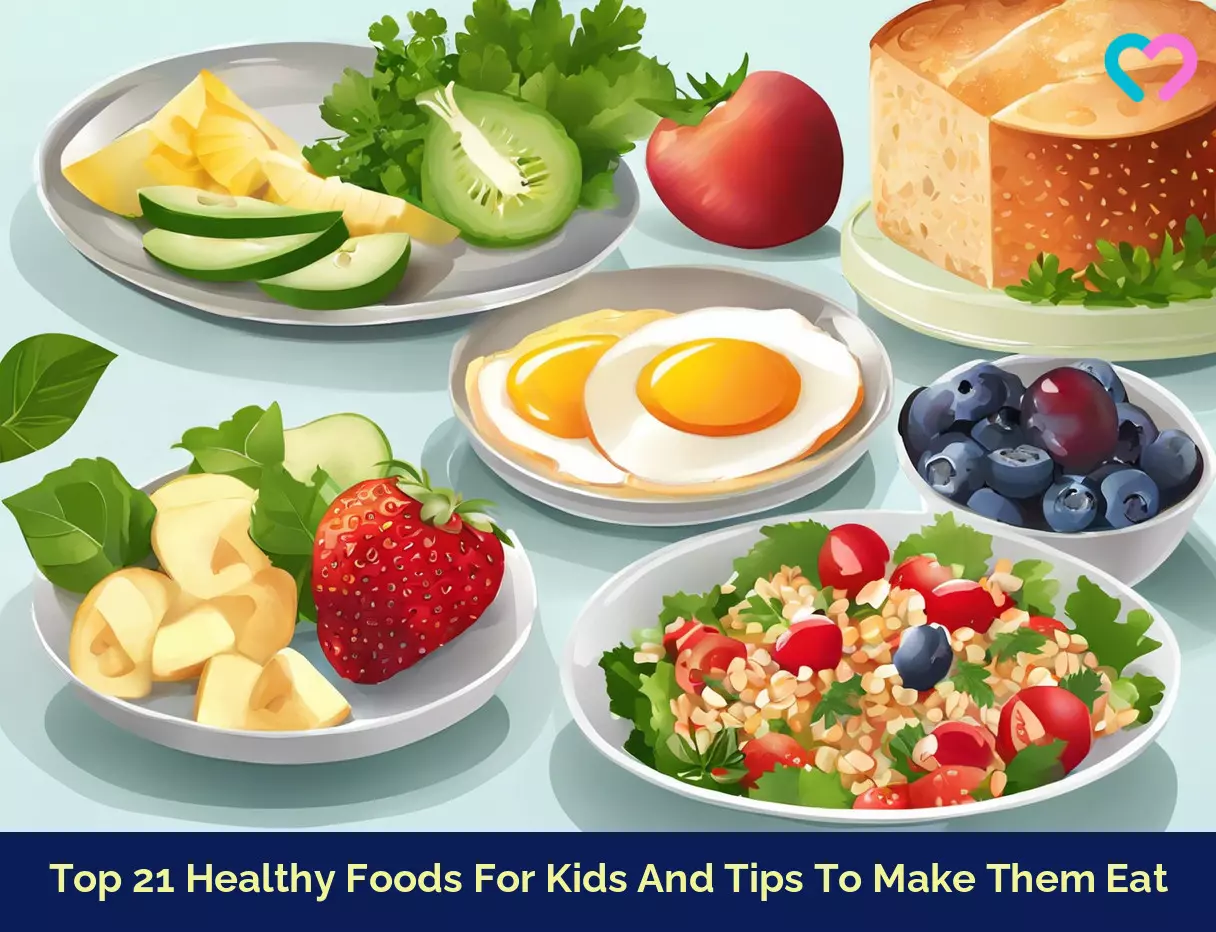
Image: Stable Diffusion/MomJunction Design Team
Embark on a fun and educational journey with this video as kids learn about the importance of healthy eating habits. Discover a world of nutritious foods and gain valuable tips.
Personal Experience: Source
MomJunction articles include first-hand experiences to provide you with better insights through real-life narratives. Here are the sources of personal accounts referenced in this article.
i. Ten ways to help kids eat fruit & vegetableshttps://alovelettertofood.blogspot.com/2015/02/10-ways-to-help-kids-eat-fruit.html
References
1. Health benefits of eating well; NHS
2. Benefits of a balanced diet; WHO
3. Key Elements of Healthy Eating Patterns; Dietary Guidelines For Americans 2015-2020
4. Quinoa, Nutritional Value; FAO
5. Oats; Harvard T.H. Chan
6. Oatmeal a good choice for breakfast, but hold the sugar; Harvard T.H. Chan
7. Ahmed S.M. Saleh et al.; Millet Grains: Nutritional Quality, Processing, and Potential Health Benefits; Wiley Online Library
8. Peter R. Shewry and Sandra J. Hey; The contribution of wheat to human diet and health; NCBI
9. Apples; Harvard T.H. Chan
10. L. Fahrasmane et al.; Bananas, a source of compounds with health properties; Researchgate
11. Kapil Kumar et al.; Medico-nutritional importance and value-added products of pineapple – A Review; Researchgate
12. Berry Good for Your Heart; Johns Hopkins Medicine
13. Nuts, coconut meat, raw, FDC ID: 170169; Food data Central; USDA
14. Arpita Basu et al.; Berries: emerging impact on cardiovascular health; NCBI
15. Vegetable of the month: Avocado; Harvard T.H. Chan
16. Sweet Potatoes; Harvard T.H. Chan
17. 12 “superfoods” you should be eating; Harvard T.H. Chan
18. All about the Vegetable Group; ChooseMy Plate; USDA
19. Khan Sohaib A et al.; Dry Fruits and Diabetes Mellitus; International Journal of Medical Research & Health Sciences
20. Legumes and Pulses; Harvard T.H. Chan
21. Yogurt; Eatright; Academy of Nutrition And Dietetics
22. Ngozi M. Eze et al.; Acceptability and consumption of tofu as a meat alternative among secondary school boarders in Enugu State, Nigeria; NCBI
23. Advice about Eating Fish; FDA
24. Understanding Egg Labels; EatRight; Academy of Nutrition And Dietetics
25. Kristin Fulgoni, et al.; Watermelon Intake Is Associated with Increased Nutrient Intake and Higher Diet Quality in Adults and Children, NHANES 2003–2018; NCBI
26. Healthy eating for children; Health Direct
27.Dietary Recommendations for Children and Adolescents; American Heart Association Journals
28. Dietary Recommendations for Healthy Children; American Heart Association
29. Why Extra Protein for Your Child Is Unnecessary – and Possibly Dangerous; Cleveland Clinic
30. Si Si Jia et al.;The Impacts of Junk Food on Health; Frontiers For Young MInds
31. Quinoa; Harvard Health
32. Health Benefits Of Millets; Oldways Whole Grains Council
33.Seeds and Nuts; Better Health Channel
Community Experiences
Join the conversation and become a part of our nurturing community! Share your stories, experiences, and insights to connect with fellow parents.
Read full bio of Seeemaa Budhraja
- Jordan Anthony, MS RDN is a registered dietitian nutritionist who holds a master's degree in nutrition, healthspan, and longevity from the University of Southern California. She focuses on creating evidence-based, customized nutrition plans focused on the core nutrients.
 Jordan Anthony, MS RDN is a registered dietitian nutritionist who holds a master's degree in nutrition, healthspan, and longevity from the University of Southern California. She focuses on creating evidence-based, customized nutrition plans focused on the core nutrients.
Jordan Anthony, MS RDN is a registered dietitian nutritionist who holds a master's degree in nutrition, healthspan, and longevity from the University of Southern California. She focuses on creating evidence-based, customized nutrition plans focused on the core nutrients.
Read full bio of Swati Patwal
Read full bio of Rohit Garoo
Read full bio of Shinta Liz Sunny










